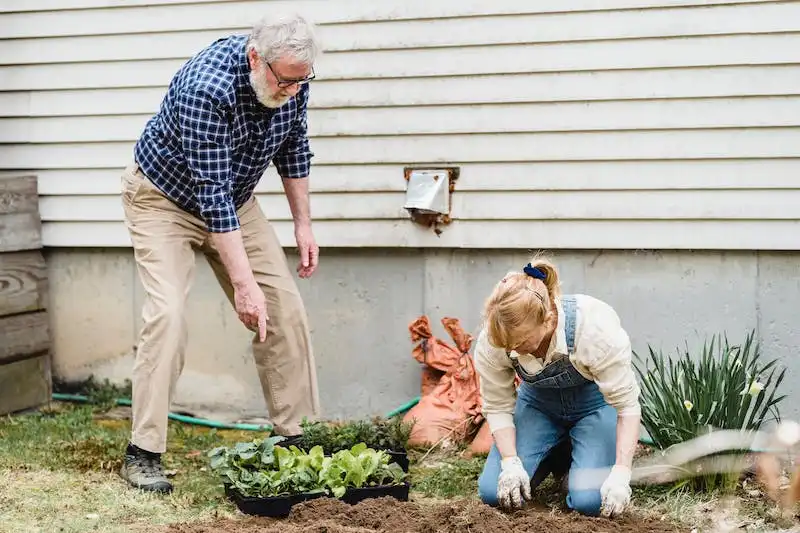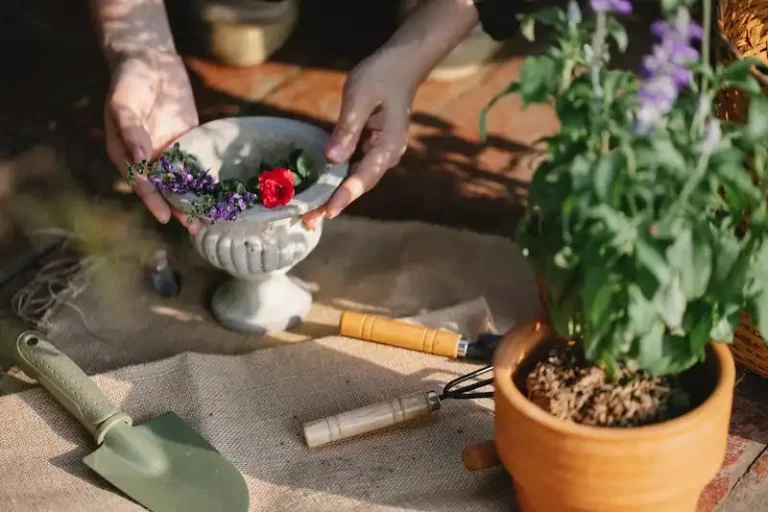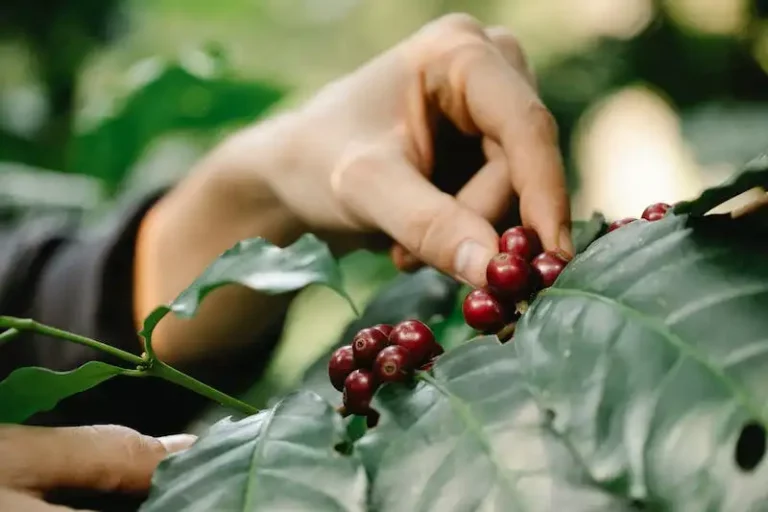If you are a fan of soups and enjoy adding healthy vegetables to your dishes, then growing leeks in your garden might be a suitable option for you. Leeks, also known as Allium porrum, are a variety of allium plants that are grown for their thick, white stalks and subtle onion-like flavor. In addition to their nutritional value, leeks are also a popular choice among gardeners because they are relatively easy to grow and require several months of frost-free weather to reach maturity.
When it comes to planting leeks, a well-drained and deeply cultivated soil is crucial. Before planting, make sure to prepare the soil by removing any weeds and loosening it with a garden hoe or fork. Leeks are typically started from seed indoors, using trays, and then transplanted into the garden. It is important to water the plants deeply and regularly, especially in the beginning, to promote healthy growth.
One common method of growing leeks is trenching, where you dig a trench and plant the leek seedlings in a deep furrow. As the leeks grow, you gradually fill in the trench with soil, known as hilling, to blanch the stems and encourage longer white sections. This method helps protect the leeks from pests, conserve moisture, and control weeds.
Leeks usually take several months to reach maturity, and they are typically harvested in the winter. You can harvest leeks by using a garden fork or a similar tool to gently lift them out of the ground. After harvesting, make sure to remove any excess soil and trim the roots. Leeks have a long shelf life and can be stored frozen or in a cool, well-ventilated place for several weeks.
As with any garden crop, leeks may encounter pests and diseases. It is important to regularly inspect your plants for signs of pests, such as aphids or leek moths, and take appropriate measures to control them. Fertilization is also necessary to ensure the healthy growth of leeks; an all-purpose fertilizer can be applied before planting and throughout the growing season.
If you have any questions about growing leeks, MSU Extension has plenty of resources available to assist you. They frequently provide information on leek selection, planting, irrigation, pest control, fertilization, and harvesting. Additionally, MSU Extension offers advice on using leeks in various dishes, as they are a versatile vegetable that can be used in soups, stews, salads, and more. So, why not try growing leeks in your garden this season and enjoy the wonderful flavor and health benefits they bring to your meals!
Leeks
Leeks are a type of plant that belongs to the onion family. They are known for their long, cylindrical shape and their mild onion flavor. Leeks come in a variety of colors, including green and white, and they are often used in soups, stews, and other dishes for added flavor.
When growing leeks, it is important to space them properly to ensure good airflow and prevent crowding. Leeks are usually started from seed and then transplanted into the garden. They should be planted in rich, well-drained soils, and they require regular watering and irrigation to thrive. Leeks are frequently harvested later in the season and can be left in the ground until they are needed.
Leeks have a long growing season and typically take several months to mature. They should be planted in early spring, around February or March, and can be harvested in the late summer or early fall. Leeks have a high nutritional value and are a good source of vitamins and minerals.
When harvesting leeks, it is important to thoroughly irrigate the soil before digging them up. This will help loosen the soil and make it easier to remove the leeks without damaging the roots. Leeks can be harvested by hand, using a fork or small shovel to loosen the soil around the plant and gently lift it out. After harvesting, leeks should be stored in a cool, dry place, such as a basement or pantry, to prolong their storage capacity.
Common questions about growing leeks include what pests and insects to watch out for and how to prevent them. It is recommended to rotate leeks with other crops to avoid the buildup of pests and diseases in the soil. Leeks can also be grown in trays or containers to conserve space and improve productivity. Hoeing and weeding are also important tasks for maintaining healthy leek plants and keeping them free from weeds.
In conclusion, leeks are a versatile and nutritious vegetable that can be grown in gardens and used in a variety of dishes. They require proper spacing, watering, and care to ensure optimal growth and productivity. By following the recommended planting and harvesting methods, gardeners can enjoy a bountiful crop of leeks throughout the year.
Source: MSU Extension
UFIFAS Publications
UFIFAS Publications provides a variety of resources for gardening, including information on growing and managing insects, as well as tips on how to grow a variety of crops.
One major publication is the “Growing Leeks” guide, which offers detailed instructions on how to grow and care for Allium porrum, commonly known as leeks. Leeks are grown for their long and thick green leaves, which can be used in a variety of dishes and culinary preparations.
According to the UFIFAS Publications guide, leeks are usually grown as a cool-season crop and can be planted in the field beginning in early spring or whenever soils can be worked. In addition, leeks can also be grown in trays or seedbeds in a greenhouse for later transplanting.
When planting leeks in the field, it is recommended to start them as transplants and then transplant them after several weeks. This method helps to ensure better establishment and reduce competition from weeds. Leeks have a long growing season and can take anywhere between 80 and 120 days to produce fully mature plants.
UFIFAS Publications also provides information on the selection of leek varieties suitable for different purposes. Some leek varieties are recommended for early production while others are better suited for storage or freezing.
For those interested in freezing leeks, the guide recommends blanching them in boiling water for a few minutes before freezing. This helps to retain their color, flavor, and nutritive value.
For gardeners looking to grow leeks, UFIFAS Publications offers advice on soil preparation, planting, and care. Leeks prefer well-drained soils rich in organic matter. It is recommended to prepare the soil by adding organic matter and thoroughly working it in. Leeks can be started from seeds in trays or directly planted in the field using a dibble or planting tool.
Once planted, leeks require regular watering and weeding. Hoeing or hand-weeding between the rows is recommended to control weeds. In addition, hilling up soil around the base of the leeks can help to blanch the stems and increase the white portion.
In conclusion, UFIFAS Publications is a valuable source of information for those interested in growing and managing leeks. Whether you want to grow leeks for their culinary value or for preserving, UFIFAS Publications provides plenty of resources to help you successfully grow this versatile vegetable.
Also on Gardening Solutions
In February, Richard asked how to store leeks. Leeks can be stored longer by thoroughly irrigating the soil before digging them up. Then, remove any damaged or diseased leaves and trim the roots down to about 2 inches. In addition, leeks can also be diced and frozen for later use in cooking. When planting leeks in the garden, it is recommended to dig a trench and space the seedlings 6 inches apart. Leeks prefer well-drained soil and full sun for optimal productivity.
When it comes to leek selection, the most recommended varieties include ‘King Richard’ and ‘American Flag’. These varieties have a longer growing season and are more resistant to insects and diseases.
If you have any leek-related questions, MSU Extension is here to help. Just ask!
MSU Extension
MSU Extension provides valuable information and resources for home gardeners on a variety of topics, including the cultivation of allium crops such as onions, leeks, and shallots.
When planting alliums, it is important to select a well-drained location with rich soil. Alliums prefer full sun and should be spaced according to the variety. Watering should be done deeply and thoroughly, but less frequently as the plants mature.
Alliums should be planted in early spring, as soon as the soil can be worked. Mulching around the plants can help conserve moisture and suppress weeds. Hoeing and weeding will be needed throughout the growing season to keep the plants healthy and prevent competition for nutrients.
In addition to proper planting and care, MSU Extension recommends hilling the soil around the base of the plants, which helps to keep the bulbs covered and prevents sunlight from turning them green. This improves storage quality and flavor.
Harvesting allium crops can begin once the leaves start to yellow and flop over. The plants should be pulled from the soil or lifted with a garden fork, and the soil should be shaken off the bulbs. Allow the bulbs to dry in a well-ventilated area for a week or longer, and then store them in a cool, dry place.
MSU Extension offers a variety of publications and resources with more detailed information on allium cultivation and other gardening topics. The organization’s website is a valuable source for home gardeners looking to improve their skills and knowledge.
In conclusion, by following the recommendations from MSU Extension and implementing good planting, care, and harvesting practices, home gardeners can enjoy a bountiful harvest of onions, leeks, and other allium crops.
Variety selection
When it comes to selecting a variety of plants for your garden, it is important to read up on the different options available. Thoroughly research the characteristics of each variety to ensure that it will be a good fit for your specific needs and growing conditions.
One important factor to consider is the maturity date of the plants. Some varieties may mature earlier or later in the season, so be sure to choose a variety that aligns with your desired harvest time.
Another important consideration is the fact that certain varieties may have specific requirements for growing conditions. For example, some plants may require more water than others, or they may prefer certain types of soils. Take these factors into account when making your selection.
In addition to the basic requirements, you may also want to consider other facts about the plants. Some varieties may have a higher folate content, while others may be more resistant to certain pests or diseases.
When it comes to planting, you have a few options. Some plants, like leeks, are biennial and require a long growing season. In this case, you may need to start the plants indoors in February and then transplant them to the garden later on. Others, like onions, can be planted directly in the garden.
If you choose to start your plants indoors, you can use trays or containers to plant the seeds. Be sure to provide adequate spacing between the plants to allow for proper growth. When transplanting to the garden, make sure to harden off the plants gradually to acclimate them to the outdoor conditions.
When it comes to planting, you can use a dibble or a hoe to create holes for the plants. Make sure to space the plants according to the recommendations for each variety.
Throughout the growing season, it is important to care for your plants. This may include watering, fertilization, and weed control. Be sure to irrigate your plants regularly and provide any necessary nutrients for optimal growth.
Harvesting is an important part of the growing process. Different varieties may mature at different times, so make sure to harvest each plant at the appropriate stage. For leeks, this is usually when the shank is about 1 inch in diameter.
Once you have harvested your leeks, they can be stored in a cool and dry place, such as a root cellar or a refrigerator. They can also be frozen for later use.
In summary, variety selection is an important aspect of growing plants. It is important to consider factors such as maturity date, growing requirements, and desired characteristics. By doing your research and selecting the right varieties, you can ensure a successful and productive garden.




